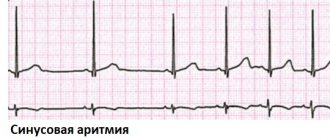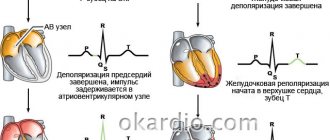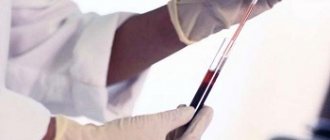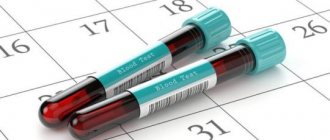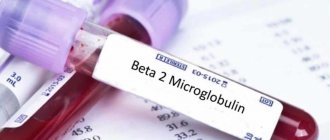What is prothrombin and the blood coagulation system?
The blood coagulation system has twelve main factors that collectively organize the coagulation process.
In clinical practice, according to the international system of standardized indicators, they are marked with Roman numerals. Prothrombin, designated number II, is the most important indicator of the general coagulogram. This is a protein synthesized by the human liver, closely related to thrombin, a clot-forming factor. Its production requires phylloquinone (vitamin K). The prothrombin index is an important analysis that helps the specialist determine the presence of five coagulation factors at once. When they are deficient in the general complex, they speak of an increase in prothrombin time (that is, the time at which bleeding stops or blood clotting occurs).
Prothrombin time increases due to the following influences:
- Low concentrations of coagulation factors in the blood (may be due to heredity - for example, congenital hemophilia);
- Absence of one of the clotting factors in the overall complex;
- Intravital change in the activity (usually an increase) of any coagulation factor;
- Exposure to coagulation inhibitors;
- Diseases of the liver and biliary tract;
- Targeted use of indirect anticoagulants (blood thinning medications).
Prothrombin time is reduced due to the following factors:
- Last trimester of pregnancy;
- Taking hormonal contraceptives (OCs and COCs);
- DIC syndrome;
- Some types of intravascular coagulation;
- Clotting factor therapy.
A decrease in prothrombin time indicates the patient’s tendency to thromboembolism and thrombotic vascular lesions.
When a patient is taking anticoagulants and coagulation inhibitors (warfarin, heparin or acetylsalicylic acid), the result of a single analysis of prothrombin time is considered biased. Therefore, experts prescribe two tests at once - the prothrombin index and partial thromboplastin time. This is necessary to discontinue the drug before surgery, since coagulation disorders can lead to heavy bleeding during surgery. If the prolonged prothrombin time turns out to be unrelated to the use of anticoagulants, it is planned to find out the causes of the problem and fully treat it.
Prothrombin time during pregnancy
Monitoring the clotting rate is important during pregnancy, especially when taking medications that affect clotting. The normal rate for pregnant women is considered to be a clotting rate of 18-25 seconds.
Deviation from the norm can lead to complications during pregnancy, the most dangerous of which is DIC syndrome (disseminated intravascular coagulation). In pregnant women it occurs for two reasons:
- placental abruption, accompanied by bleeding;
- amniotic fluid embolism;
- endometritis.
Often, pregnancy ends spontaneously as a result of antiphospholipid syndrome, which causes blood clots to form in the arteries and veins. These deviations lead to disruption of intrauterine development.
Relevance of the analysis
A prothrombin time test is performed to monitor dynamics during anticoagulant treatment, diagnose the causes of bleeding, and identify a tendency to form blood clots.
The study is recommended before surgical treatment of patients (including minor interventions in vascular surgery).
Our specialists prescribe a screening test for prothrombin time for the following diseases (or suspicions of them):
- PE (pulmonary embolism);
- Myocardial infarction;
- Deep vein thrombosis;
- Infarction of the intestines and kidneys;
- DIC syndrome;
- Pre-infarction state or micro-infarction.
In addition, it can be included in the range of diagnostic measures to identify oncological pathologies, severe chronic liver diseases, and polycythemia.
A coagulogram is included in the standard package of preoperative studies. It is also used to determine the causes of bleeding of various locations and etiologies (in particular, internal).
Preparing for the test
The most accurate result of a screening test is obtained if the patient follows all the conditions for taking the test.
Blood sampling traditionally takes place in the morning.
In this case, you must follow some rules:
- Eight-hour fasting before taking material;
- Refusal to take any liquid other than water on the day of blood donation (alcohol, black or green tea, and coffee have a particularly negative effect on the objectivity of the test result);
- Discontinuation of any medications associated with changes in blood clotting properties no later than 1-2 weeks before the test. It is ideal to carry out the analysis before starting their schematic intake, if possible;
- Notifying the treating or supervising specialist about taking medications if it was not possible to complete their course in a timely manner;
- Avoid heavy physical activity and conflict situations (or other psycho-emotional stress) the day before the test;
- Limit fatty and fried foods a few days before the test.
It is important to limit smoking at least 1-2 hours before taking blood for analysis.
Coagulogram. What is this?
You can take a coagulogram test on any day (except Saturday and Sunday) in the laboratory of the National Health Institution “Nodal Hospital at the station. Vyborg. The result is issued on the same day. (office no. 4)
Coagulogram (syn.: hemostasiogram) is a set of blood indicators that characterize its ability to clot. Blood clotting is one of many protective functions that maintain the normal functioning of the body by preventing excessive blood loss.
The coagulogram can be basic or extended. Typically, a baseline study is ordered first. It helps to understand where in the system the deviation from the norm occurred. And if a pathology is detected, a detailed study is carried out, as a result of which not only qualitative changes are determined, but also quantitative ones.
Material for taking a coagulogram: Venous blood Indications for a coagulogram:
- monitoring the state of the hemostasis system;
- routine examination before surgery;
- pregnancy;
- gestosis (complication of a normal pregnancy);
- monitoring of anticoagulation therapy; (for example, taking heparin)
- monitoring of antiplatelet therapy;
- hematological diseases;
- varicose veins Moscow
- atrial fibrillation;
- Coronary heart disease (CHD);
- stroke;
- Pulmonary embolism (PE);
- DIC syndrome; (impaired blood clotting due to massive release of thromboplastic substances from tissues)
- taking medications (oral contraceptives, glucocorticosteroids, anabolic steroids);
- cirrhosis of the liver.
Basic coagulogram parameters:
- Fibrinogen . The most important test of the state of the coagulation system.
- Prothrombin index (PTI), INR (international normalized ratio), PTT (prothrombin time) . Usually one of these tests is performed, based on the equipment available in the laboratory. The most universal test is INR. All of these studies show an extrinsic clotting pathway.
- Activated partial thromboplastin time . In the test you can find the abbreviation APTT.
- Thrombin time.
Additional coagulogram parameters:
- Protein C. An insufficient amount of this parameter leads to thrombosis.
- Antithrombin . Like protein C, it is a factor in the anticoagulation system.
- D-dimer . Formed as a result of the destruction of a blood clot.
- Lupus anticoagulant.
- Plasma tolerance to heparin.
- AVR (Activated Recalcification Time).
- RFMC (soluble fibrin-monomer complexes).
- Plasma recalcification time.
Coagulogram norms (Table):
| Clotting time | ||
|
| |
| Bleeding time | ||
|
| |
| Analysis indicator | Designation | Norm |
| Prothrombin time according to Quick | PV | 11-15 sec |
| INR (International Normalized Ratio) | INR | 0,82-1,18 |
| Activated Partial Thromboplastin Time | APTT | 22.5-35.5 sec |
| Activated Recalcification Time | AVR | 81-127 sec |
| Prothrombin index | PTI | 73-122% |
| Thrombin time | TV | 14-21 sec |
| Soluble fibrin-monomer complexes | RFMK | 0.355-0.479 units |
| Antithrombin III | AT III | 75,8-125,6% |
| D-dimer | 250.10-500.55 ng/ml | |
| Fibrinogen | 2.7-4.013 g | |
Preparing for a coagulogram:
- This analysis is carried out in vitro (in vitro - outside the body). Blood is taken from a vein.
- Blood is donated on an empty stomach. The last meal should be no later than 8-12 hours before the test.
- You cannot drink any drinks (coffee, tea, and especially alcohol). Only clean water is allowed.
- When taking a coagulogram, it is necessary to indicate the medications you are taking - especially those that affect the blood clotting process Moscow
- The emotional state of the patient is very important. You need to try not to be nervous, to be calm and balanced. Muscle overstrain also negatively affects the results of the study.
- It is useful to drink an additional glass of cold water right before taking the test.
- Interpretation of the results is carried out only (!) by a specialist.
Coagulogram during menstruation:
A coagulogram during menstruation is not able to give clear results. The fact is that during this period the blood is diluted and it is not possible to test its clotting abilities. Therefore, to carry out the procedure, it is advisable to wait until the end of the critical days, but not to take the test immediately.
During this period, the body, on the contrary, is interested in removing excess blood from the uterus, so coagulation is somehow impaired. After the critical days, everything returns to full normality, and the woman can easily get tested. Again, it is also not worth carrying out the procedure just before your period; the body is preparing for the withdrawal process and the blood gradually thins out. In this case, the coagulogram will be unreliable and will have to be taken again
Factors influencing the result of a coagulogram?
Factors distorting the result of the analysis:
- violation of the technique of taking and storing material;
- blood sample hemolysis;
- the presence of fat drops in the material;
- ingress of tissue thromboplastin from the patient’s capillary blood;
- the presence of a lupus anticoagulant in the patient’s blood (directly inhibits coagulation factors);
- sharply increased or decreased hematocrit;
- anticoagulants entering the blood sample;
- transfusion of donor blood components in the last month (distorts the fibrinogen indicator, APTT).
Factors that increase INR and PT and reduce PI:
- drinking alcohol, fatty foods;
- medications: antibiotics, anabolic steroids, aspirin (in large doses), acetaminophen, allopurinol, warfarin, vitamin A, heparin, glucagon, diuretics, MAO inhibitors, indomethacin, kanamycin, clofibrate, corticotropin, levothyroxine, mercaptopurine, methyldopa, mefenamic acid, mithramycin, nalidixic acid, neomycin, nortriptyline, propylthiouracil, reserpine, streptomycin, sulfonamides, tamoxifen, tetracyclines, tolbutamide, phenylbutazone, phenytoin, quinidine, quinine, chloral hydrate, chloramphenicol, cholestyramine, cimetidine, ethanol.
Factors that reduce INR and PT and increase PI:
- excess intake of vitamin K from food (found in beef or pork liver, green tea, broccoli, chickpeas, cabbage, turnips, soy, green leafy vegetables);
- diarrhea and vomiting (due to dehydration and increased blood viscosity);
- medications: vikasol (vitamin K analogue), antacids, antihistamines, ascorbic acid, barbiturates, griseofulvin, digitalis, diuretics, colchicine, corticosteroids, caffeine, xanthines, meprobamate, oral contraceptives, rifampicin, theophylline, phenobarbital, chloral hydrate.
Factors that increase APTT:
- antibiotics, asparaginase, aspirin, warfarin, heparin, thrombolytic drugs (streptokinase, urokinase), quinine, cholestyramine, cyclophosphamide, enoxaparin.
Factors that increase fibrinogen content:
- estrogens, oral contraceptives.
Drugs that reduce fibrinogen levels:
- atenolol, valproic acid, lipid-lowering drugs, corticosteroids, progesterone, thrombolytic drugs (streptokinase, urokinase), fluorouracil, estrogens, fibrin degradation products, nicotine.
Influence of external factors on test results
The study result may be unreliable not only when taking indirect anticoagulants or coagulation inhibitors. Even food sources can affect it, especially those enriched with the stimulator of prothrombin production, vitamin K.
The following foods consumed in large quantities may affect the analysis result:
- Alcoholic drinks;
- Soya beans;
- Green tea;
- Green leafy vegetables;
- Cabbage;
- Beef, veal, pork liver.
The following medications can reduce prothrombin time:
- Oral contraceptives;
- Vitamin K (phylloquinone);
- Concentrates of prothrombin complex factors;
- Barbiturates;
- Hormone replacement therapy drugs;
- Thyroid hormones;
- Antibiotics (some types);
- Androgens;
- Anabolic steroid;
- Antidiabetic agents;
- Antiarrhythmic drugs;
- H2 receptor antagonists (prescribed to patients with ulcers and gastritis);
- Laxatives and diuretics.
Tell your specialist if you are taking homeopathic medications or dietary supplements.


